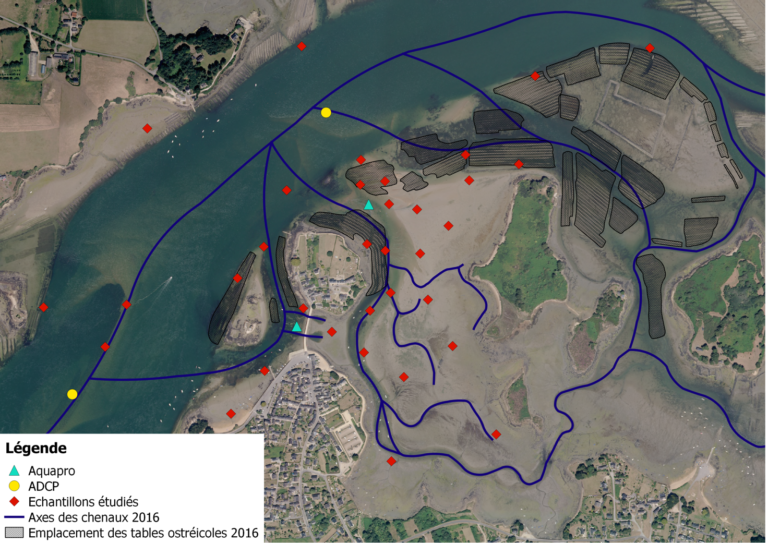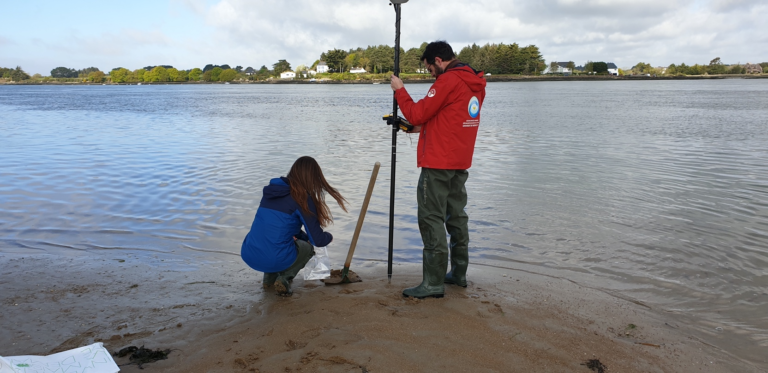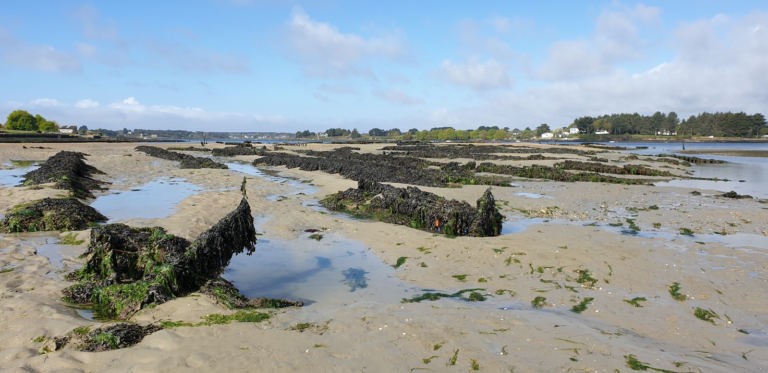
Projet Saint-Cado
Caractérisation de l’ensablement du Chenal de Saint-Cado à la Ria d’Étel
Reponsable du projet : Mouncef Sedrati (LGO-UBS)
Porteurs du projet : LGO UMR CNRS 6538 – UBS
Financement : Syndicat Mixte de la Ria d’Étel
Durée du projet :
Présentation
Autour du chenal de Saint-Cado, secteur nord-est, depuis plusieurs années, les usagers locaux font part d’une accumulation de sable dans l’un des chenaux. A terme, cet ensablement pourrait devenir problématique pour le déplacement des conchyliculteurs, des pêcheurs à pied professionnels et de loisirs et des plaisanciers. C’est en effet un chenal de navigation qui permet de se déplacer d’une zone de pêche à pied à une autre. Mais également d’aller sur les parcs ostréicoles ou encore de naviguer entre les zones de mouillages et le chenal principal. Il pourrait également faire évoluer les milieux naturels présents de par un effet induit sur la courantologie. Que ce soit l'augmentation de la surface des vasières, voire détérioration du fonctionnement biologique de la zone de pêche à pied avec diminution de la production de coques et palourdes, ou encore modification des herbiers de zostères, habitats d’intérêt communautaire.
Afin de répondre aux interrogations des plaisanciers, des conchyliculteurs et des élus, le Syndicat mixte de la ria d’Etel engage le LGO-UBS pour réaliser une une étude afin de caractériser l’ensablement du secteur nord-est du chenal de Saint- Cado (Belz), ses conséquences économiques, sociales et environnementales, et identifier des solutions pour remédier à ce constat.

Emplacements des points de déploiements des appareils de mesures hydrodynamiques et des échantillons
Actions principales
Le projet comporte 4 volets :
VOLET 1 : caractérisation sédimentaire du site d’étude ;
VOLET 2 : caractérisation de l’hydrodynamisme du secteur d’étude ;
VOLET 3 : caractérisation du fonctionnement hydro-morpho-sédimentaire du site ;
VOLET 4 : caractérisation des conséquences économiques, sociales et environnementales de cet ensablement et proposition de solutions techniques pour le rétablissement d’une circulation hydrodynamique locale, le cas échéant.

Échantillonnage en zone intertidale et prise de coordonnées en DGPS

Tables conchylicoles au niveau de Saint-Cado
Partenaires du projet HydroGolfe 2


